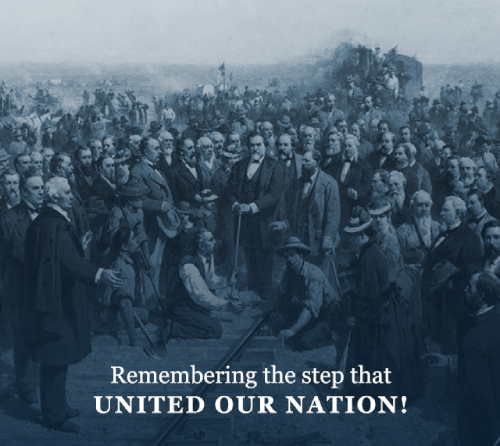The Monumental Achievement of the Transcontinental Railway
10th May 2019

The Monumental Achievement of the Transcontinental Railway On July 1 of 1862 President Abraham Lincoln signed the Pacific Railway Act which authorized land grants and bonds to two companies- the Central and Union Pacific Railroads. They would start from different east/west points and meet somewhere in the middle (though the exact location was never named). Each company would receive $48,000 in government bonds for every mile of track laid. The companies began this incredible task in 1863 from California and 1864 from Nebraska. The sheer numbers to complete this laborious task were daunting and each company employed and relied heavily on immigrants, primarily from China and Ireland, to do the majority of the work. Up to 15,000 Chinese were hired to supplement the man power needed.
A construction project this large, while going over so much territory was not without its trials. One major hurdle was traversing the 15 different tribal lands it crossed during a time when the land was still in dispute. Many of the Great Plains tribes, after seeing their traditional lands being taken by settlers, attacked the railroad construction crews and surveyors in hopes of stopping this new intrusion of settlers. When the skirmishes were neutralized the two rail lines finally joined on May 10, 1869.
For the ceremony, the Union Pacific No. 119 and Central Pacific No. 60 engines were drawn together at Promontory Summit, Utah and christened with champagne. After the ceremony, the laurel wood crosstie and precious-metal ceremonial spikes (two gold, one gold & silver and one silver) were replaced with a standard pine crosstie, into which three iron spikes were driven. The fourth iron spike was wired to the transcontinental telegraph line so the Nation could "hear" the last blows as the spike was driven. On a side note: Atlanta United FC uses a golden railroad spike today to reward hard working players whose performance stands out in a match. The humble railroad spike has grown to mean a lot. In 1837, a spike was driven into Georgia’s red clay leading to the formation of a city. The spike signifies connection to the world- the uniting of coasts, cultures, generations and backgrounds.
The population of the US spread rapidly in a short period of time, more than doubling the western population. How incredible was this? It cut an arduous and perilous six-month journey down to a safe 6-7 days! The cost was reasonable as well, you could get a ticket for as little as $65 (third class, basically got you a bench) to go from New York to San Francisco. The rich could travel in style for $136 which put them in a first-class Pullman sleeping car. Second class citizens could travel for $110. ACC is commemorating the 150-year anniversary of such a monumental achievement with railroad inspired items.
//


 Gift Cards
Gift Cards